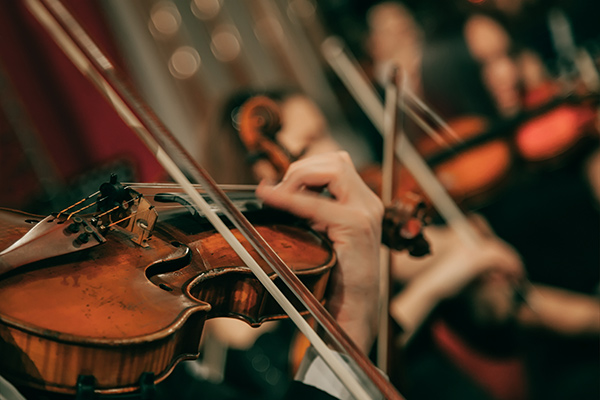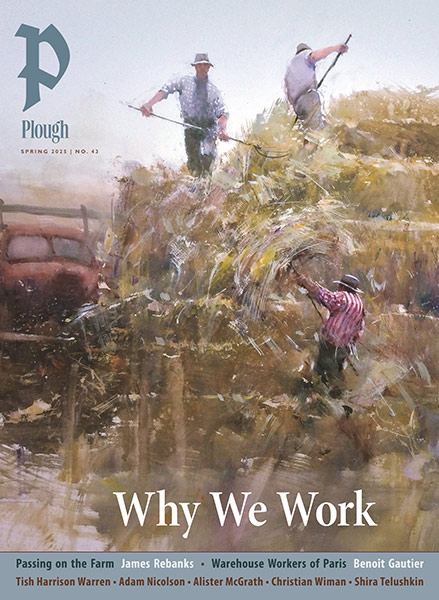Subtotal: $
Checkout
Preparing for Lives of Meaning and Depth
Attending a New York Philharmonic concert made me ponder the civilizational achievement of a symphony.
By Roosevelt Montás
December 3, 2024
I had the pleasure of attending the New York Philharmonic’s opening concert for this season. I’m not a musician and I have the shallowest of musical education. So this was a treat on many levels, not least of which was the sheer novelty of it. People were dressed up; it was fun to watch. I recognized the pieces by Beethoven and Tchaikovsky that the orchestra performed, but Dvořák’s Cello Concerto in B Minor was entirely new to me. Yo-Yo Ma was on the cello. In addition to being bathed in gorgeous music, I had a perfect view of the orchestra from above, and could observe the physical movements by which the musicians produced the music. And I could see how the conductor and the orchestra communicated with each other. It was an almost overwhelming aesthetic experience, a feast for the senses so intense it reminded me of sin.
Two dozen violins, a dozen violas, nine cellos, seven basses, four flutes, four oboes, and multiple clarinets, bassoons, horns, trumpets, cymbals, keyboards, and drums, all playing at the same time. But not in a cacophony – in symphony. I was struck by the magnitude of the civilizational triumph that this thing I was witnessing represents. It hit me that this was a pinnacle of human achievement. Each of those musicians, a master. Each note rehearsed thousands of times. Each instrument the product of a long and disciplined tradition of craftsmanship. I kept wondering how in the world you produce a composer of orchestra music? How do you grow the knowledge and the imagination to sit down and write music for fifty musicians? How do you say, Here will come six violins and do this; while the oboes over there continue to do what they were doing except in a different tempo; while the flutes come in with an entirely new motif and the drums start a low murmur that grows into a loud rumble over half a dozen bars? How do you produce a person who can hear that in their head and put it down on paper?

Photograph by DeshaCAM / Adobe Stock.
There is a whole social and civilizational infrastructure that has to be in place over many generations for something like a symphony to appear in this world. It is a kind of efflorescence; the same kind of scandalous excess of beauty that sometimes you see in a flower. And what’s the point of all the effort, skill, cost, dedication that went into producing that concert? It was … just that. To play that concert. It was to express a sublimity whose value is all contained in the expression itself, the experience of it. No one could coerce those craftsmen, those musicians, the composers, to do such a thing. It could only be produced under conditions of freedom – freedom from compulsion, but also freedom from want, and freedom from utility.
Aristotle calls this kind of nonutilitarian expression of human excellence virtue. This is what humans do, in all cultures and in all times, when we find ourselves under conditions that allow for the maximal expression of our freedom. And that kind of craft and activity, the nonutilitarian expression of our highest capacities, is what we call the liberal arts. That category of human activity is not going to stop. The liberal arts are not going to fade away. Nor is liberal education. As long as human beings carry the spark that makes them human, they will practice the liberal arts.
But we do rightly fret about the future of the institutions and practices that for more than a thousand years have served as the vehicle of preservation and dissemination for the liberal arts. That is, we worry that such institutions are abandoning en masse that function of preserving and disseminating liberal education. We worry that liberal education will retreat again into the bastions of privilege and exclusivity where they were incubated and nourished for much of our history. We must not let that happen. We won’t let it happen. Consider the Catherine Project, the Odyssey Project, the Clemente Course in the Humanities, Calvin University’s Prison Initiative and other prison education programs, the Nyansa Classical Community, the new Lyceum Movement. These are just a few of the ways in which individuals across the country have put their shoulders to the cause of bringing liberal education to all, and making it alive. We’re not letting the liberal arts return to a den of exclusivity and privilege.
Liberal education is not just for people who are trying to become academics, but for anyone who is engaged in the project of self-cultivation and authentic living.
And while it’s good that the liberal arts can thrive and are thriving outside the university, we mustn’t acquiesce to its abandonment within the university. Our political culture is fracturing, and it is faltering precisely along the lines that a liberal education is meant to address. At the same time, colleges and universities are walking away from liberal education, diluting it and shunting it to the side. The moral deformation that we see in our politics is of a piece with the university’s neglect of its mission to educate free citizens.
College students are also increasingly focused on career-oriented majors, and they won’t necessarily seek out the kind of broad education that best prepares them for lives of meaning and depth. But the fact is that most college curricula do not offer such an education. This is where the crisis of liberal education lies, not simply in the decline in the number of students majoring in the liberal arts. A liberal education has nothing to do with majoring in the liberal arts. A liberal education is no less important for the chemist, the computer scientist, and the banker than it is for the historian, the critic, and the humanities professor.
At the heart of undergraduate liberal education are courses that grapple with the core questions of politics, religion, and philosophy that have shaped our world and our lives. A hunger for truth and self-transcendence makes liberal education immediately compelling. It’s not true that all students want from a college is a good job. They come to us with needs and aspirations that can only be fulfilled by noneconomic goods. They want an education that not only teaches them things, but transforms them; an education that addresses their entire selves, not just their bank account; an education that teaches them not just how to make a better living, but how to live a better life. We have the goods; we have the vision. We also have the wherewithal to make liberal education a vital force in the lives of our students, in the lives of our communities, and in the life of our nation.
From a talk given at the launch of the book The Liberating Arts: Why We Need Liberal Arts Education.
Already a subscriber? Sign in
Try 3 months of unlimited access. Start your FREE TRIAL today. Cancel anytime.






